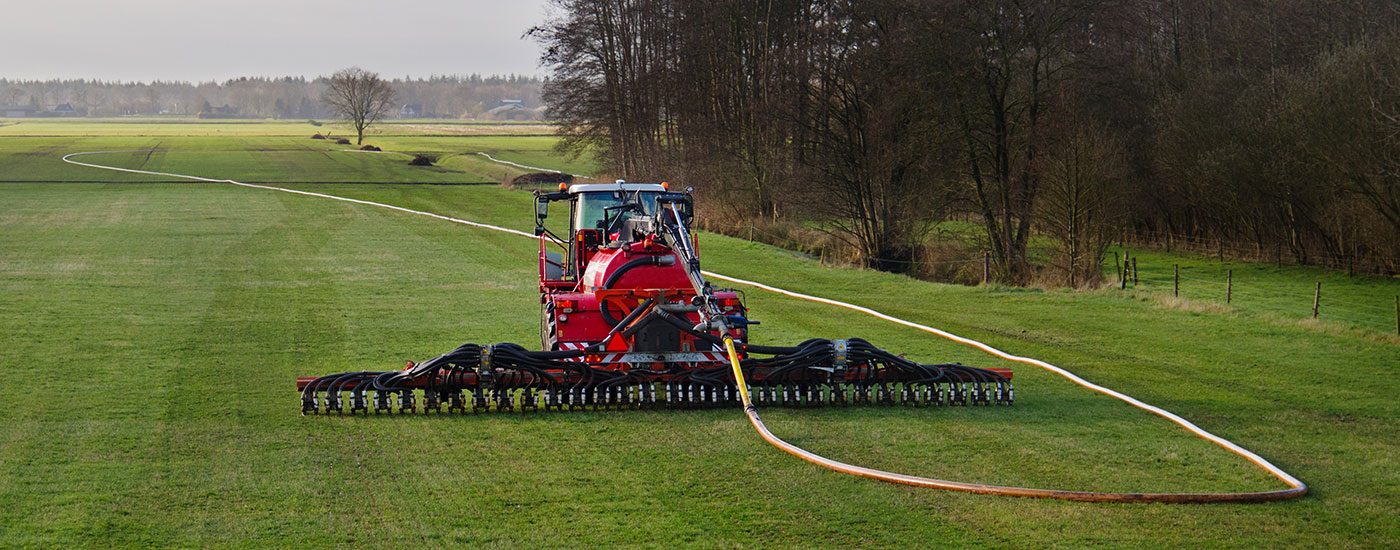Slurry Injecting
Send us a message

What is Slurry Injecting?
Slurry injecting is the process of grinding solids, in this case, manure, into small particles which can then be combined with water or an alternative fluid, to create a slurry consistency, which can then be injected. The slurry product is injected into the ground and can stimulate boosted production of crops. Slurry injection can allow more nitrogen to be introduced into the soil, but, as with all manure application processes, farmers must measure and gauge the mineral levels within their soils ahead of applying or injecting any further fertilisers. Slurry injection has become a favoured process of application in recent years, due to its reduced ammonia emission (around 70% reduction), which can preserve Nitrogen, reduce odour complaints and overall provide a more cost-effective agricultural service solution.
In some instances, the traditional method of slurry spreading may be preferred to injection. Regardless of which method you choose, to maximise the efficacy of your slurry, you will need to consider an appropriate storage solution – head to our dedicated slurry storage page to find out more.
There are different kinds of slurry injection, use for implementing manure into streams on top of the soil, or for injection below the surface. This can be achieved through shallow disk injection, chisel injection and various experimental options available, with the distance between units variable in order to adjust for the delivery requirement. Trailing shoe machines and the use of injection can appear costly to some, however, the costs incurred during the adoption of this method can result in a vastly reduced loss of product and nutrients in the soil, resulting in more bountiful harvests and are ideal for farms which produce an extensive surplus of manure.
What is Slurry Injecting Used For?
Utilizing the manure byproduct, derived from livestock and dairy operations and converting it the slurry for the use of injection can have a number of benefits to farming operations. Manure slurry injecting can be utilised as a fertiliser across agricultural activities, and with the process of injecting, loss of product and profit can be lost. The process of injecting can reduce the loss of Nitrogen which is needed to boost the production of minerals within the soil.
What are the Benefits of Slurry Injection?
There are a number of key benefits when it comes to opting for slurry injection on your farm;
- Slurry injection can reduce the odour and air pollution caused by traditional manure spreading
- Slurry injection can be undertaken directly prior to seeding or alternatively, during the growing season, which can result in a reduced Nitrogen volatilization loss and boost the availability of it to the plants, this can reduce the requirement for further fertilisation to increase Nitrogen production, within the soil
- Reduced risk of soil erosions in comparison to tillage-based manure application, due to a reduced risk of Phosphorus runoff
- The process of slurry injection can also support in preserving the soil structure and reduces the risk of soil compaction due to use of nurse tracks on many pieces of slurry injection machinery
Our Slurry Injecting Machines & Process
Our current system allows the slurry to be evenly applied to the whole field, for best results. We offer the use of our Challenger Terragator 2244 NMS Self Propelled Slurry Injecting Machine, which allows for the shallow injection of slurry and allows up to 90% of the available Nitrogen to be absorbed into the soil.
We are also able to offer a slurry testing facility to ensure that the slurry being sued has undergone a thorough analysis so that we may establish the exact nutrient content and then further establish an application rate, suitability for crop types and the best time for application.
We lead the slurry from the store and into the Terragator, in the field using purpose-built road tankers behind the tractor. These slurry injectors can fill in around three minutes, via the loading arms, with the ability to carry 16 cubic meters/3500 gallons. Once in the field, the Terragator attaches to the loading arm in order for the tanker to fill itself, which takes under two minutes to complete.
Our machinery allows us to provide our customers with a high capacity system, that aims to help reduce the use of artificial fertilisers and ensures that there is minimal damage to the soil due to the very low ground pressure due to ‘dog walk’ field steering mode.





